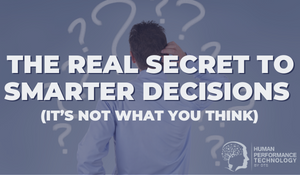Models to Assist Decision-Making
-3 Minute Read
Several models and frameworks have been developed to assist in analysing all aspects of a situation, thereby facilitating consistently sound and timely decision-making. These frameworks aim to maximise benefits and minimise challenges by providing structured approaches to decision-making processes. Here are some of the most widely used models and frameworks:
Rational Decision-Making Model
This model involves a systematic process of defining the problem, identifying the decision criteria, weighing those criteria, generating alternatives, evaluating the alternatives against the requirements, and choosing the best option. It emphasises logical and structured steps to arrive at decisions.
Cost-Benefit Analysis
This framework compares the costs and benefits of different decisions to see which yields the most significant advantage. It's beneficial for decisions that require significant investment or resources.
Decision Matrix (or Grid Analysis)
This tool lists your options as rows on a table and the factors you need to consider as columns. Each option is scored and weighted to give an overall score that helps make a decision. It’s helpful in comparing multiple options based on several criteria.
The Cynefin Framework
This framework helps decision-makers to categorise problems into five contexts—Simple, Complicated, Complex, Chaotic, and Disorder—offering guidance on how to approach decision-making in each.
PESTLE Analysis (Political, Economic, Social, Technological, Legal, Environmental)
Similar to SWOT, PESTLE focuses on external factors that could impact decisions. It's particularly useful for strategic planning, helping organisations to understand the broader macro-environmental factors.
McKinsey 7-S
Developed in the 1980s by two McKinsey & Company consultants, Robert Waterman and Tom Peters, this model helps decision-makers to look at a problem from multiple angles to allow for a more complete view of a decision and its potential impact. Learn More Here.
Six Thinking Hats
Developed by Edward de Bono, this model encourages decision-makers to consider a problem from six distinct perspectives (emotional, informational, logical, creative, overview, and caution) to generate holistic and well-rounded decisions. Learn More Here.
Root Cause Analysis
Aimed at identifying the root causes of problems rather than treating symptoms, this approach ensures that solutions address the underlying issues, preventing recurrence.
Opportunity Cost
This model considers what you must give up to get something else. It's the principle of evaluating the potential benefits you miss out on when choosing one option over another, ensuring that the chosen option offers the best value relative to the alternatives.
Second-Order Thinking
This goes beyond looking at immediate effects to considering a decision's subsequent effects. It's about thinking ahead and considering the longer-term consequences that can arise after the initial outcomes.
Margin of Safety
Originating in finance but applicable across various decision-making scenarios, this model suggests choosing options that allow for a buffer or safety margin. This reduces the risk of negative outcomes if things don't go as planned.
The Pareto Principle (80/20 Rule)
This principle suggests that in many situations, 80% of outcomes come from 20% of causes. Applying this model can help focus efforts on the most impactful activities or decisions. Learn More Here.
Inversion
Instead of thinking about what you want to achieve, consider what you want to avoid. This mental model helps identify obstacles and risks early on, allowing for strategies that mitigate potential negatives.
Ockham’s Razor
When presented with competing hypotheses that make the same predictions, the one with the fewest assumptions should be selected. In decision-making, this translates to favouring simplicity and avoiding unnecessary complexity.
Sunk Cost Fallacy
This model reminds us not to let our past time, effort, or money investments dictate our future decisions. Just because resources have been invested does not necessarily mean continuing on the same path is the best course of action.
Hanlon's Razor
This principle suggests not attributing to malice what can be more easily explained by mistake or ignorance. It's helpful in decision-making by preventing biases against others from clouding judgment and promoting a more objective analysis.
Falsifiability
Introduced by philosopher Karl Popper, this model suggests that for a theory to be considered scientific, it must be able to be proven false. In decision-making, it encourages considering whether a decision can be tested and potentially refuted, fostering an openness to being wrong and learning.
Circle of Competence
Understanding the boundaries of your own knowledge and expertise can help focus decisions on areas where you have the most understanding, reducing the risk of errors due to lack of insight.
First Principles Thinking
This involves breaking down complex problems into their most basic, foundational elements and rebuilding them from the ground up. It's a powerful way to generate original solutions and make decisions based on fundamental truths rather than assumptions or analogies.
Each mental model offers a different lens through which to view decisions, and the key to effective decision-making is often to apply multiple models, thereby gaining a richer, more nuanced understanding of the situation at hand. By employing models and frameworks, individuals and organisations can approach decision-making in a structured and strategic manner, enhancing the likelihood of making informed, effective, and timely decisions. Each model has its strengths and is suited to different choices, making it essential to choose the one that best fits the specific context and objectives.

Trevor O'Sullivan
General Manager. Since the early 2000s, Trevor has worked with thousands of Talent Management professionals to develop and apply assessment-based talent management solutions for selecting, developing and managing people. Trevor is an active member of the TTI Success Insights (TTISI) Global Advisory Council, contributes to TTISI product development and is a regular presenter at TTISI-R3. He is honoured to have received multiple Blue Diamond Awards and, more recently, the Bill Brooks Impact Award recognising his contributions to the TTISI global network.

/Decision-Making%20Styles.png?width=374&name=Decision-Making%20Styles.png)

We Would Like to Hear From You (0 Comments)